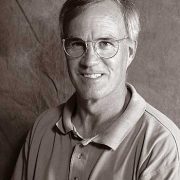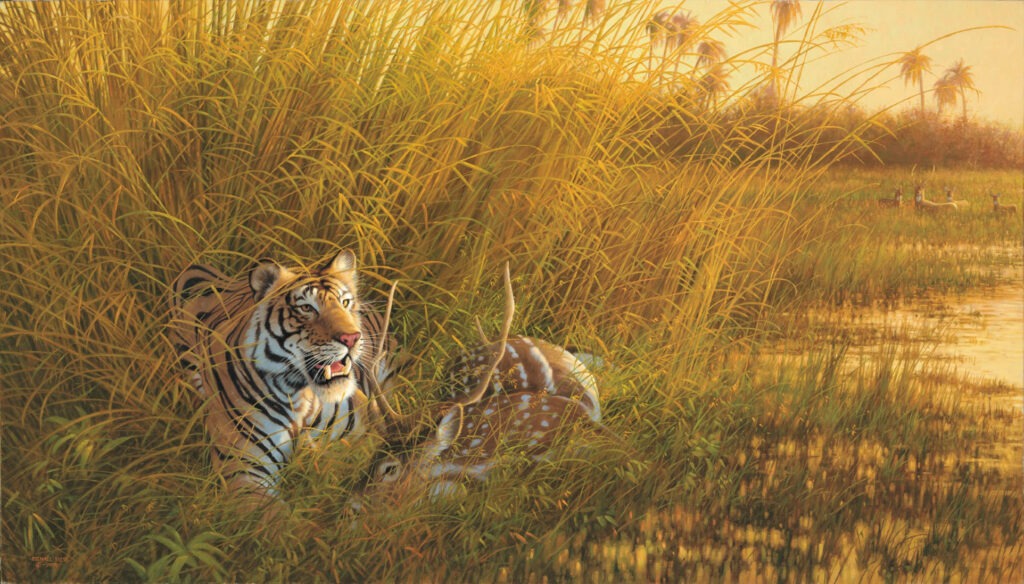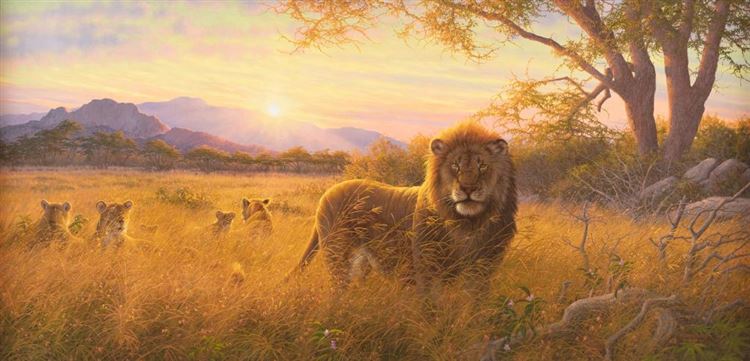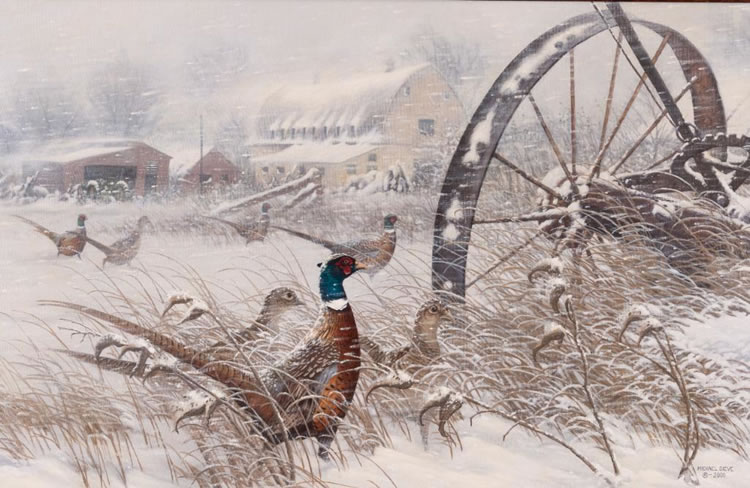1951 –
Growing up in Wilmont, Minnesota, a town of 300 residents located near the South Dakota border, Michael Sieve spent his youth in part studying and hunting foxes, geese and rabbits. Although this was good training for his future career, his rural upbringing far from encouraged his artistic development. Sieve attended a school that had no art program, and he only drew pencil sketches, since he, didn’t own a paint set until he was 17. He didn’t visit an art museum until he was 20.
Sieve, who now lives in Houston. Minnesota (population: 1,000), says no one in his family owned a painting. “I grew up with a farm background which had a high work ethic, so saying you wanted to be an artist was like saying you wanted to go to the moon. It was considered a crazy idea.”
When Sieve enrolled in Southwest Minnesota State College in 1969, he opted to study something more practical-advertising. But he soon realized that his heart wasn’t in it, so he switched his major and earned a degree in studio art. “So, now what do you do with that?” the artist asks. The pragmatic thinking he was raised with led him to work in a slaughterhouse for almost a decade before he became a professional artist. ‘Working at the slaughterhouse gave me the money to go out on my own; painting at, night gave me the technical skills; and hunting on the weekends gave me the inspiration,” he explains.
Sieve’s knowledge of his subjects gives his work a strong realistic quality. “One-half of my work, such as the jaguar and humpback whale pieces, comes from on-site research,” he explains. “While I was on a two month trip in Africa, I shot 400 roles of film.” He has also fished the waters of Alaska, where he photographed killer and humpback whales and bravely faced grizzly and polar bears.
The other half of the oil painter’s work is comprised of what he calls his backyard paintings,” which include turkeys, deer, song- birds and other creatures near his home. The artist’s studio overlooks 25 acres of farm land, part of which he has turned into a wildlife preserve. I’ve planted many trees. I consider it one big organic garden,” Sieve says proudly. He and his wife, Deborah, donate about $3,000 a year to conservation groups.
Sieve’s artworks, have landed him many awards, including the First of State in Oregon’s Duck Stamp contest from 1984 through 1986, Artist of the Year for the Iowa Bowhunters in 1983 and the 1992 Artist of the Year for Ducks Unlimited. Capturing animals in all their moods and motions, Sieve has turned a “crazy idea” into a successful reality.




